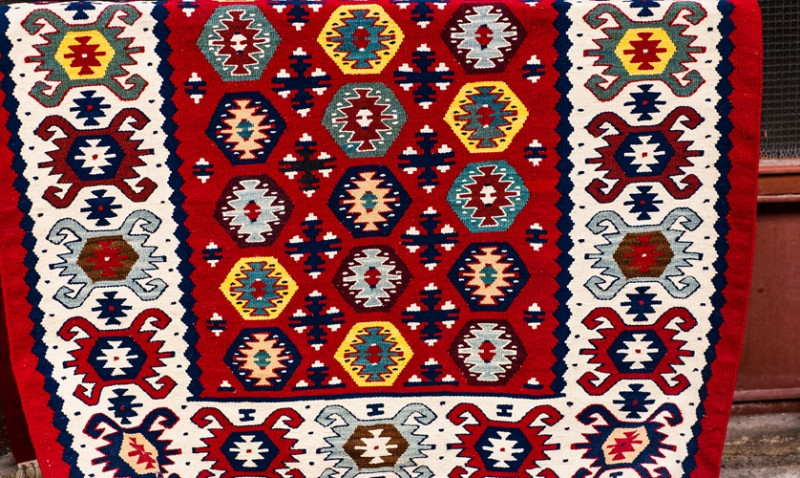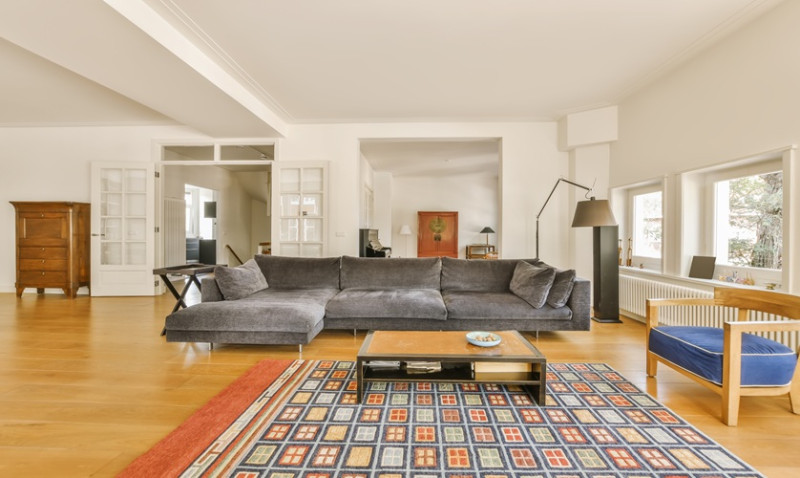
Whether you're updating your lounge, refreshing your bedroom, or adding warmth to a home office, choosing the right rug size can make or break the look and function of your space. A well-proportioned rug adds balance, defines zones, anchors furniture, and ties your design scheme together. But, with so many options on the market, many DIY enthusiasts, home decorators, and even design professionals struggle to get it right. In this guide, we break down everything you need to know to choose the perfect rug size for any room in your home.
Why Rug Size Matters
Let’s start with the basics: the size of your rug directly affects how your room looks and functions. A rug that’s too small can make a space feel disjointed and awkward, while an oversize rug may overpower the furniture layout and make the room feel tighter than it is.
In living rooms, choosing the right rug helps define the seating area. In bedrooms, it adds comfort underfoot and a sense of luxury. In dining rooms, it not only hardens the style but also protects the floor from chair movement. In short, getting rug size right is more than style — it’s a cornerstone of good interior design.
Choosing the right rug isn’t only about dimensions — it’s about proportion, scale, and how your furniture interacts with the rug. That’s why taking your time to measure thoughtfully and envision the space is a smart first step in any decorating project.
Living Room Rug Sizing Tips
The living room is often the focal point of the home — it's where we relax, entertain, and spend quality family time. Accordingly, your rug should bring the space together and support both comfort and cohesion. Depending on the size of your room and furniture layout, there are a few key options to consider:
| Room Size | Suggested Rug Size | Layout Tip |
|---|---|---|
| Small (e.g., flats, compact lounges) | 120cm x 170cm | Use in front of a two-seat sofa with no furniture legs on the rug |
| Medium (average semis or terraces) | 160cm x 230cm | Place front legs of sofa and chairs on the rug for a unified look |
| Large/Open Plan | 200cm x 300cm or larger | All furniture can sit fully on the rug to define the seating area |
Use painter's tape to outline the desired rug size on your floor before making a purchase. This visual cue helps you determine how the furniture will sit on or around the rug and whether the scale feels right.
Rugs for Bedrooms – Getting It Right
In bedrooms, rugs offer both comfort and visual interest. They add warmth underfoot when you step out of bed and help frame the room for added cosiness. With beds being the dominant element in the room, your rug choice should complement — not compete with — the layout.
If you have a double or king-size bed, you’ll want a rug that extends generously beyond the sides and foot of the bed. An ideal bedroom rug size for a standard double bed is typically 160cm x 230cm or larger.
You can either place the rug fully under the bed (allowing it to extend at least 50cm around the edges), or you might prefer to position it two-thirds under the bed, stopping just behind the bedside tables. This still creates a grounded look while using less material.
For small rooms or tight budgets, consider using two smaller rugs on either side of the bed rather than one large one. This symmetrical approach works well in minimalist and Scandinavian-inspired interiors.
Choosing Rug Size for Dining Areas
Dining area rugs must balance beauty with practicality — after all, this space must stand up to daily use and still look sharp. The goal here is to choose a rug that is large enough that all chairs can sit entirely on the rug, even when pulled out.
As a rule of thumb, your rug should extend at least 60-75cm beyond the edge of the table on all sides. This allows chairs to glide smoothly without catching on the rug’s edge. Skipping this step often leads to frustration during mealtimes.
Measure your table length and width, then add 120 to 150cm to each to determine an appropriate rug size. Choose materials that are easy to clean — flatweave or synthetic fibres are durable and stain-resistant.
If your dining space is part of an open-plan layout, a rug also helps to anchor the area and separate it visually from the living or kitchen zones. In modern UK homes, where open-concept living is popular, this use of rugs can elevate your interior aesthetic.
Entryways, Hallways & Other Transitional Spaces
Entryways set the tone for your home, and rugs here must deliver style and functionality. A properly sized hallway runner not only protects high-traffic floors but also adds a welcoming layer to your decor.
Choose a runner that leaves a 6-10cm border of flooring exposed on both sides. For standard UK hallways, a common runner size is around 60cm x 180cm or 70cm x 240cm. For longer corridors or period homes, custom options may better suit the proportions.
Non-slip backings or rug grippers are essential in these spaces to prevent slipping — especially during damp British winters. Choose dark tones or patterned rugs if you’re concerned about visible wear, especially if you have pets or children.
Pro Tips
Still unsure? Here are a few expert pointers to help you make an informed decision:
- Size up, when in doubt – It’s better to go bigger than too small. A larger rug makes the room feel more cohesive and luxurious.
- Consider your lifestyle – For busy households, machine-washable or performance fabrics are ideal. Wool and jute are great for style and durability.
- Think in zones – Open-plan homes benefit from rugs that define each functional area (e.g. dining, lounging, reading nook).
- Layer for texture – Layer smaller rugs over larger bases to add depth and contrast — ideal for boho or eclectic interiors.
- Visualise with tape – Tape out your rug’s dimensions on the floor to see how it interacts with furniture before committing.
Final Thoughts
Picking the right rug size doesn’t need to be overwhelming. With the right measurements, a clear sense of your room’s function, and attention to proportion, you can select a rug that truly elevates your interior. Whether you're planning a complete redecorating project or just refreshing a room, the perfect rug adds texture, comfort, and design polish.






